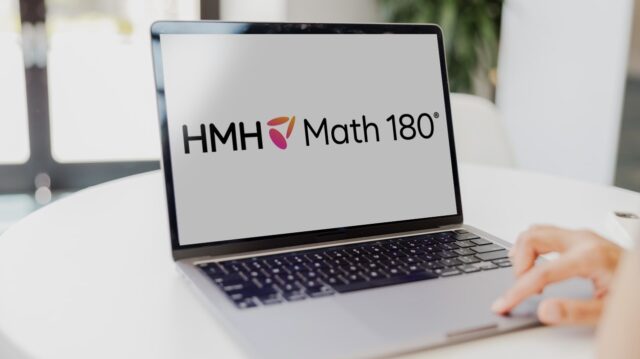
Happy 2025 Pi Day! By the time March comes around each year, there's always room to honor the number \(\pi\) in the math classroom. Consider taking a break from the traditional lesson plan and incorporating some fun Pi Day activities for high school students into your curriculum on or around March 14.
But it doesn't just have to be in March! The number \(\pi\) has a long and rich history that can tie into lessons all year round. By high school, students have likely encountered plenty of \(\pi\) already and may even be equipped to learn about some of the history of the number. If you're interested, be sure to check out our article on a history of pi.
Pi Day Projects for High School
We know that when it comes to celebrating Pi Day, your options are endless. (Much like \(\pi\)'s decimal expansion!) So, we compiled some of our favorite Pi Day ideas below to help you celebrate the joy of \(\pi\).
1. Outdoor Circle Activity
Take some pi outside! The number pi represents the ratio of a circle’s circumference to its diameter, and it doesn't matter how small or large the circle is. Pi Day can be an excellent excuse to get your students outdoors. Have them look for a large circle, such as a circular neighborhood, park area, or building. If none exists nearby, you can have students design one—for example, by drawing a diagram for a large circular garden that encompasses the entire school. Now, have students calculate the circumference and diameter using any unit of measurement, including nonstandard units such as their feet or stride lengths. How accurate were their measurements? How close did their ratio get to \(\pi\)? How could they make it closer?
2. Pi-Fidelity Songs
Divide your students into groups for this Pi Day project for high school. Have them take a well-known song and rewrite the lyrics to focus on pi—what it is, why it matters, how it’s used, and so on. For more advanced classes, consider having students sing about pi’s uses in trigonometry, probability, physics, or calculus. This is a great opportunity for students to work together and get their creative juices flowing! They can even present (and yes, sing) their final song to their classmates.
3. Throw a Pi-Themed Party
Pi-themed hats. Pi-themed decorations. Maybe even some sort of pie. (Pizza, perhaps?) All of these can be used to help you celebrate Pi Day in the classroom. If you take this route to honoring Pi Day, we encourage you to also incorporate one of the other activities on this list to give your celebration some pizzazz.
Want to take it a step further? Have your students measure the radius and diameter of different food items at the party and compare the circumferences and areas.
4. The Language of Math
Build a little language instruction into math class! Begin by having students think of other symbols, letters, or words they know about that represent mathematical constants. (Possible examples include: e, the golden ratio φ, the gravitational constant G, non-Arabic numerals such as Chinese numerals, English words such as “half” or “trio.”) The fact that the ratio of a circle’s circumference to its diameter is a mathematical constant has been known since ancient times, but the first recorded use of the letter \(\pi\) was in the early 18th century, as \(\pi\) is the first letter of the Greek word for periphery (i.e., the periphery, or perimeter, of a circle). Have students examine the ways they use words and symbols to represent mathematical ideas:
- What is a reasonable range for “about one half?” What about “almost an entire day?”
- Some words have precise numerical meanings such as “decade” and “trio.” What are some others?
- For bilingual students: what are some differences in how numbers are expressed in both languages?
- What are some equivalent ways of expressing the same mathematical constants? (For example: \(\frac{6}{2}\) and 3, \(\sqrt{2}\) and \(2^{0.5}\), 0.999... and 1)
5. Calculate Pi Using Statistics
Have each student present a different circular object to the class. Measure the circumference and diameter of each object and note all the measurements in a table. Divide each circumference by each diameter. What is the “class average” of \(\pi\)? How close did they get to the exact value of \(\pi\)? What are strategies students could use to get a more accurate value? (Possible answers include: use tools that get more exact measurements, include more circular objects in the data set, use bigger circles for greater precision.)
6. Write Pi-kus
Instead of haikus, have students write pi-kus, where the arrangement of syllables is 3-1-4 instead of 5-7-5. While he didn’t think up this activity himself, math teacher Steven Francis did this activity with his students on Pi Day in 2016:
On #PiDay, my Calc BC class and I did some #Pi-ku, instead of 5-7-5, it's 3-1-4. pic.twitter.com/uFhsNqBDn3
— Steven Francis (@SFrancismath) March 14, 2016
See below for another option to celebrate Pi Day using poetry. In this Pi Day activity for high school, have your students write poems with the letter count of each line matching each digit of \(\pi\): a 3-letter word, 1-letter word, 4-letter word, and so on. For the mathematically adventurous, research writing \(\pi\) in other bases and see how the poetry changes.
Celebrating Pi day in English class too. Writing poems w/ the letter count of each line matching the digits of Pi✍🏻. A Pi-em...?🤷🏻♀️ pic.twitter.com/vlLYRNs2D5
— Sonia Corlew (@soniacorlew) March 15, 2019
7. Pi Day Scavenger Hunt
Use Pi Day as an opportunity to show students that the mathematical constant \(\pi\) shows up in many places in the real world! There are many ways to look for pi, which we describe in a Pi Day scavenger hunt created for middle schoolers. Many of the objects listed in that article would be appropriate for high schoolers, too. Here are some examples for students who are mathematically ready:
- The word diameter, radius, or circumference in a book or magazine
- An object with area of approximately \(\pi\) square inches
- An object that ways approximately 3.14 ounces
- Place containing the number 3141 or 31415 (think about license plates, dates, phone numbers, and so on)
8. Buffon’s Needle Activity
One surprising way to calculate \(\pi\) is using the laws of probability in a problem known as Buffon’s needle problem, named after a famed 18th century mathematician who was the count of a French village called Buffon (pronounced “boo-FOHN”). Students as young as in 7th grade can try this. Download this activity from Into Math to see how to set it up. The probability of dropping a needle (or similarly shaped object, such as a toothpick) and having it land on a series of lines involves the number \(\pi\). Explain to students that when making calculations using probability like this, the more trials, the greater the accuracy. In other words, with more trials, the experimental probability approaches the theoretical probability.
The most straightforward explanation for why this activity works requires calculus. However, you can show students that seeing \(\pi\) in the result isn’t so surprising! Have them mentally replace each needle of length t with a circle of diameter t. Then the problem is about the probability that the needle, as it’s positioned in the circle, crosses one of the lines.

9. Historically Speaking
Have students each research an approximation of \(\pi\) used at some point throughout history. It may help to look at our article on the history of pi. They can also search online for different approximations used in history and around the world. Facilitate a discussion where students compare their findings.
- What approximation did you find? What are other ways to write it?
- Whose approximation is closest to the actual value?
- Whose approximation is easiest to remember?
- When might the approximations that people found still be useful today? Think about different applications, such as performing a computation by hand, in a calculator, or in your head.
10. Keeping Up to Date
The United States is one of the few countries in the world that writes shortened dates starting with the month, for example, March 14 is “3/14,” not “14/3.” This is why Pi Day, which is in honor of the number 3.14..., is celebrated on March 14. However, this is not the only way to notate dates! Many places around the world write days before months, and when the year is included, different countries use different styles. Research how dates are written in other places around the world. How would this year’s Pi Day be written? When would you recommend celebrating Pi Day in places that don’t have a day on March 14 that’s written as “3/14?”
11. Phonetically Speaking
Similar to Activity 4, this is an opportunity to incorporate ELA instruction (in this case, graphemes) into math class. The reason we use the symbol \(\pi\) is because it begins the Greek word perifereia, referring to the periphery (or perimeter) of a circle. The Greek “p” sound is written with the Greek letter \(\pi\). Assign students different writing systems, such as Cyrillic, Hebrew, Devanagari, or Japanese (which has several alphabets). In what ways is the “p” sound represented in those writing systems? How do you translate perimeter, and what might be the symbol for \(\pi\) if the symbol spread instead from those languages instead? Consider creating a bulletin board or online presentation with different ways to write pi.

12. Pi Day Game: Memorizing the Digits of Pi
It’s important that students realize \(\pi\) is much more than a decimal that “doesn't repeat or end.” (Often this is the only thing that students remember about \(\pi\)!) But students can still engage with one of the most fascinating aspects of \(\pi\), its irrationality. Which one of your math students can memorize the most digits of \(\pi\)? Distribute a worksheet with the first hundred digits to students, and hold a contest where students must recite as many digits as they can in front of the class. Award the winner with extra credit or some sort of prize! (We’ve seen on social media that in some schools, the winner gets to pie the teacher—but hey, we’ll leave that up to you.) You can even turn this into a grade- or school-wide competition. In future years, see if any student can break the previous years’ records.
13. Pi-Themed Art
There is no shortage of ways to connect math to art. The number pi, specifically, can be used as the basis for all sorts of art projects. Here are some ideas to get started:
- An image can be made of circles with their circumferences and diameters highlighted.
- The digits of pi can be arranged to create a picture.
- The Greek letter \(\pi\) can made part of a larger composition.
- An image can be based on the graph of an equation that includes pi, such as the formula for the area of a circle, \(A=\pi r^2\).
Let students use calculators and computers to make their art mathematically precise, and encourage them to create artworks that reflect feelings they have about both math and art. The only limit is their imaginations! Once students have completed their art projects, consider celebrating Pi Day by having a class gallery.
14. Create a Human Pi
This would be a grade- or school-wide activity. Can you and your students break the world record for the largest pi symbol composed of humans? You may need to do this outdoors or in your school’s gymnasium. Right now, the record is held by Carl-Friedrich-Gauss Grammar School in Frankfurt (Oder), Brandenburg, Germany, from March 2014, with 589 students and teachers.
Teach the fun of math with five hands-on activities that spark curiosity in your students.













